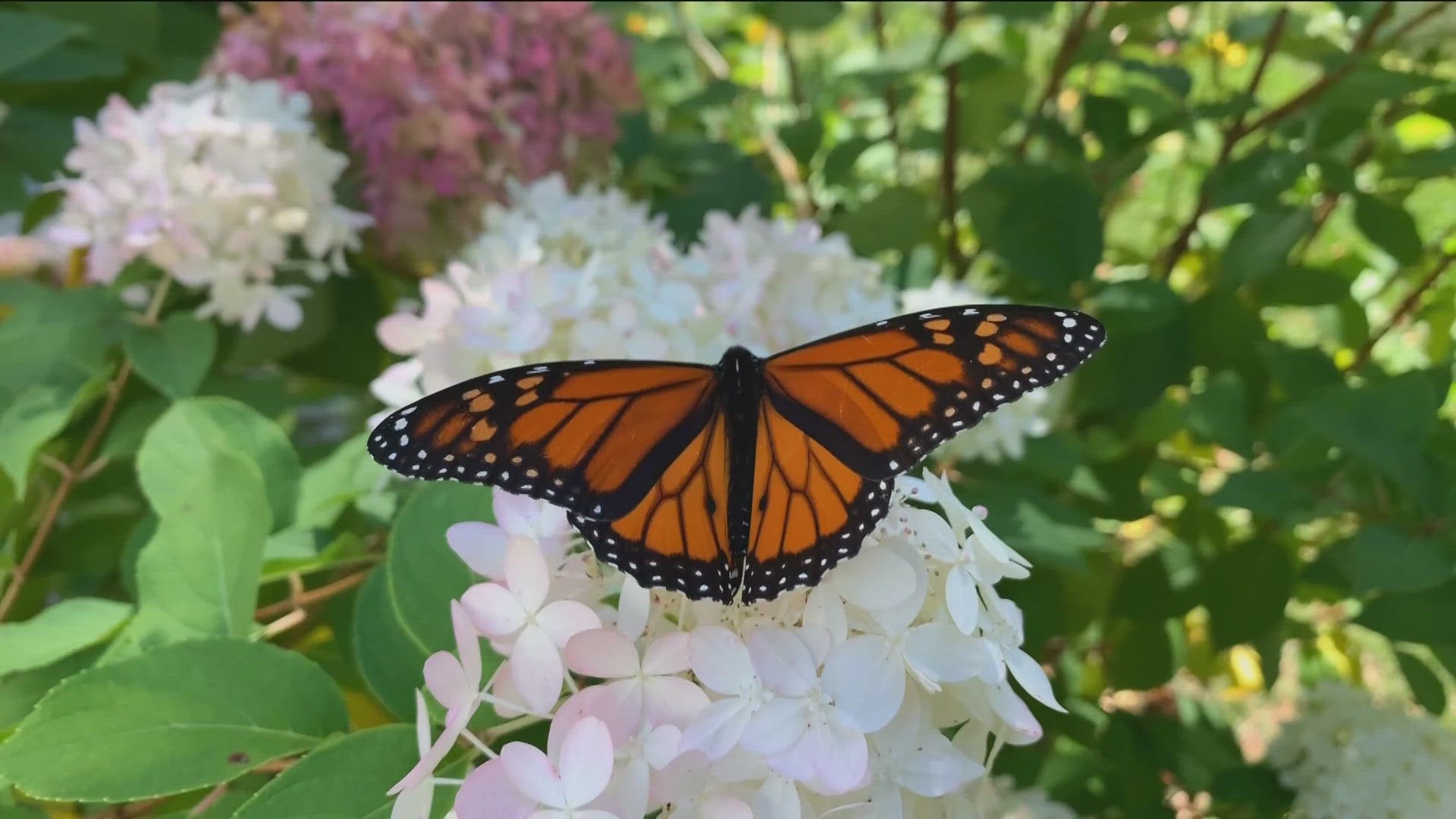SAN DIEGO — The Eastern monarch butterfly that summer in the Midwest and Canada and migrate to Mexico for winter have seen a dramatic decline in their numbers over the past two decades, especially from last year to this year, according to conservation scientists at a news conference in Mexico City.
Researchers looked at oyamel fir forests in south-central Mexico and found that 2.2 acres were being used for roosting, as compared to 5.5 acres last year. Gloria Tavera, the Director of Conservation at the National Commission of Natural Protected Areas, said that is the second smallest count compared 2013-2014, which had the smallest count ever.
"When we had a decrease of 0.67 hectares on the oyamel fir forests in the sanctuaries at the state of Mexico and Michoacan, 10 years later there is again, for the second time, a considerable drop in the forest occupation of the colonies," Tavera said.
A hectare equals just under two-and-a-half acres, which means the loss compared to last year is over half the population surveyed. It is estimated that 21 million monarch butterflies roost in a hectare, which means the count went down to less than 19 million.
"This represents a 59.3% decrease in monarch population with respect to the area it occupied during the 2022-2023 season of 2.21 hectares," said Tavera.
Expert says chemicals contribute to monarch population loss
Adan Pena, head of the Commission of Natural Protected Areas, said a lot of the loss is due to the use of chemicals.
"We are going to take action in this corridor to prevent land-use change and the use of toxic agrochemicals. Particularly glyphosate and others, according to science, are also effecting the environment," Pena said.
Glyphosate is a weed-killer that is used in farming and around landscapes, homes, and businesses. It kills just about all plants, including milkweed and nectar-producing plants — both crucial for the survival of monarchs.
The United States and Mexico are working closely with Canada to help save the monarch butterflies.
"I'm very confident that given all the research and all the work we've done together across the three countries that we have a lot of knowledge and a lot of evidence base right now to begin conservation action and begin to reverse the decline of the monarch and conserve the monarch population," said Gregory Mitchell, a research scientist at Environment and Climate Change Canada.
How you can help
So, this is a call-to-action moment: I know you're thinking, how can one person make a difference? Well, you can try planting milkweed in your garden, along with nectar-bearing flowers for habitat.
Try to use less toxic herbicides. Maybe try pulling some weeds for a change. Because if we don't start doing something now, these beautiful creatures may go the way of the dinosaurs.
WATCH RELATED: Monarch butterflies return to California after years of decline (Dec. 27, 2021)

